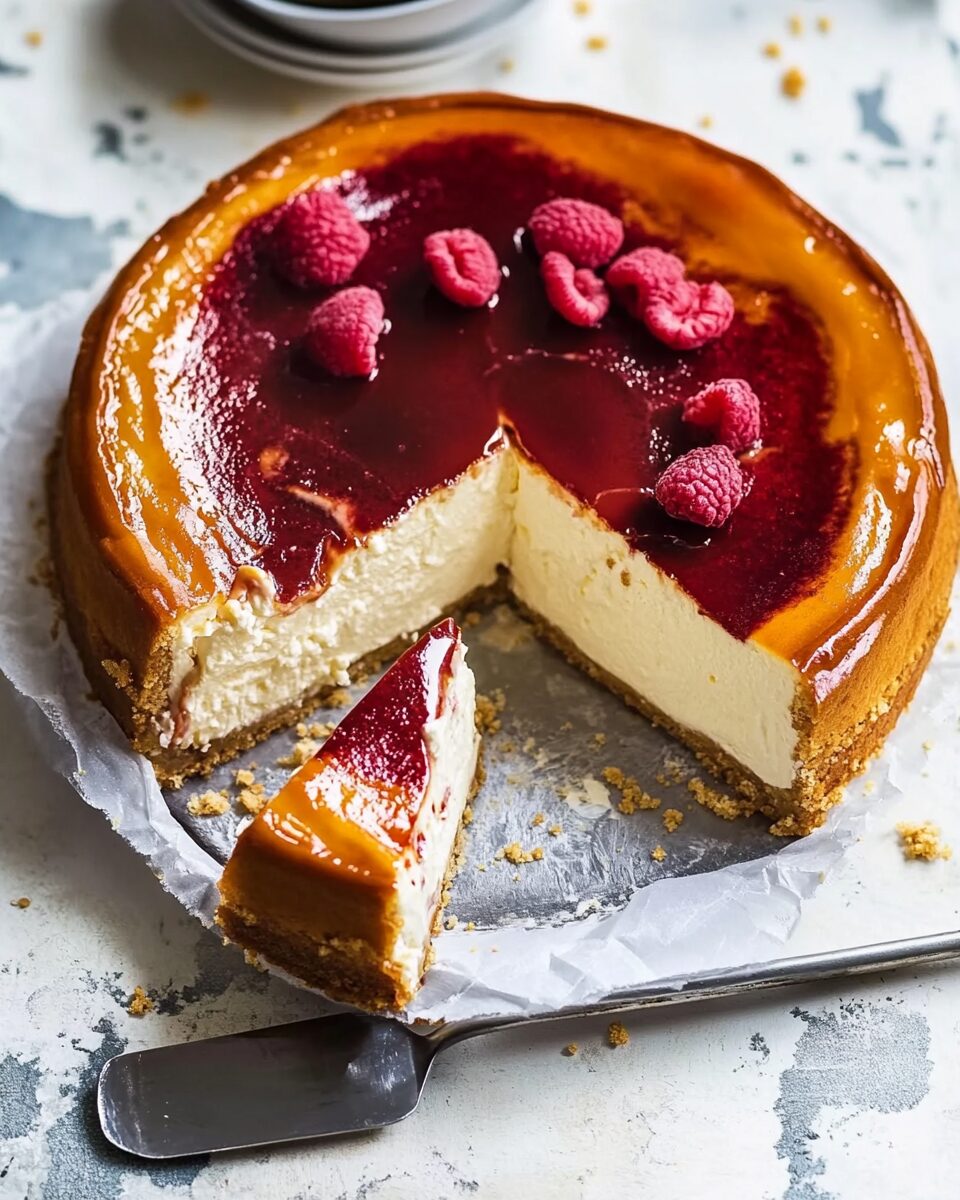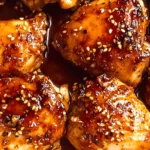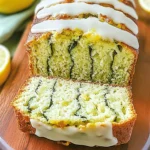The Basque Cheesecake is an iconic Spanish dessert with a unique visual charm and a flavor that’s pure indulgence. Its golden, caramelized top draws you in, but it’s the creamy, mousse-like interior that keeps you coming back. Unlike dense New York styles or overly sweet versions, this cheesecake strikes a perfect balance — rich but light, elegant but rustic.
This crustless beauty doesn’t need toppings or sauces. Its intense vanilla notes and gentle caramelized surface are reminiscent of crème caramel, offering a luxurious experience with each bite. It’s perfect served as-is, straight from the fridge or after a gentle rest at room temperature, making it a showstopping dessert for any occasion.
Full Recipe:
-
750 g (1.5 lb) cream cheese, room temperature (preferably Philadelphia)
-
1 cup caster/superfine sugar (regular sugar acceptable)
-
1¼ cups whipping cream (not low fat), slightly de-chilled
-
¼ cup all-purpose flour
-
1 tsp vanilla bean paste or extract
-
¾ cup + 1 tbsp lightly whisked eggs (approx. 220g / 200 ml, 4–5 large eggs)
Directions:
-
Preheat oven to 220°C / 425°F (200°C fan).
-
Scrunch and line a 20cm (8-inch) springform pan with two large sheets of baking paper in an “X” pattern, allowing overhang.
-
Beat cream cheese in a large bowl on medium speed for 2 minutes until smooth.
-
Add sugar and beat on low speed for 10 seconds until just incorporated.
-
In a separate bowl, whisk flour with ¼ of the cream until smooth. Gradually whisk in remaining cream and vanilla.
-
Slowly add the cream mixture into the cream cheese mixture while beating on low.
-
Slowly add in the whisked eggs, still on low speed. Stop mixing as soon as incorporated to avoid bubbles.
-
Pour batter into the pan. Tap pan on counter and pop surface bubbles with a knife. Repeat if needed.
-
Bake for 45–65 minutes, until the surface is a deep golden brown and the center is still jiggly.
-
Cool at room temperature for 2 hours, then refrigerate uncovered for at least 8 hours (preferably overnight).
Prep Time: 20 minutes | Cooking Time: 50 minutes | Total Time: 1 hour 10 minutes
Kcal: 398 kcal | Servings: 12
A Deep Dive Into the Basque Cheesecake: Spain’s Most Captivating Dessert
Few desserts have captured the attention of both professional chefs and home bakers in recent years like the Basque Cheesecake. Known for its deeply caramelized top, custardy center, and dramatic presentation, the Basque Cheesecake has moved from the cafés of San Sebastián into kitchens and bakeries all around the world. It’s a treat that is as rustic as it is luxurious, with an elegance that belies its simple preparation.
This article delves into what makes the Basque Cheesecake so special—its history, unique texture, expert tips, and why this dessert continues to win the hearts of dessert lovers everywhere.
The Origin Story of Basque Cheesecake
Basque Cheesecake, or “Tarta de Queso,” hails from the Basque Country in Northern Spain, a region renowned for its rich culinary heritage. This particular cheesecake was popularized by La Viña, a modest bar in San Sebastián, where chef Santiago Rivera first served it in the 1990s. His version was different from anything the world had seen before—there was no crust, no water bath, and instead of striving for a pale and smooth top, the cake was baked until its top was almost burnt.
Despite its scorched appearance, this cheesecake offered a dreamy texture—light, creamy, and cloudlike. Over time, word spread, and what was once a local delicacy became an international phenomenon. Today, Basque Cheesecake is served in fine dining restaurants and cafés from Tokyo to New York and frequently featured in food magazines and social media platforms.
What Makes Basque Cheesecake Unique?
The most striking feature of a Basque Cheesecake is undoubtedly its appearance. Unlike classic American or New York-style cheesecakes that strive for smooth tops and often include a graham cracker crust, the Basque version is unapologetically imperfect. Its top is intentionally dark, almost burnt, with uneven, rustic sides. But that’s precisely what makes it beautiful and alluring.
Another defining characteristic is its texture. When properly made, the inside is incredibly light and mousse-like, thanks to careful mixing and high-temperature baking. It doesn’t have the dense consistency often associated with traditional cheesecakes. The middle remains soft, even jiggly when first baked, and firms up slightly after refrigeration without ever becoming stiff.
The flavor is also more delicate—sweet, but not cloying—with a subtle hint of vanilla and a beautiful caramel note from the burnt top. The absence of a crust means nothing distracts from the luxurious filling, allowing every bite to melt effortlessly on your tongue.
The Science Behind the “Burnt” Top
The hallmark caramelized surface of the Basque Cheesecake is not just a visual feature—it’s also a key to its flavor profile. By baking at a much higher temperature than conventional cheesecakes, the sugars in the batter rapidly caramelize, giving it that toasty, slightly bitter edge that contrasts beautifully with the sweet and creamy interior.
This technique defies traditional baking norms. Most bakers avoid over-browning or burning the tops of cakes, but with Basque Cheesecake, this “flaw” is embraced and even celebrated. The burnt top adds complexity, almost mimicking the rich, slightly bitter flavor of a well-made crème brûlée or dark caramel.
Common Mistakes and How to Avoid Them
Despite being relatively simple, there are a few pitfalls to avoid when making Basque Cheesecake. Understanding these will ensure you get that signature texture and flavor every time:
-
Overbaking: One of the most common mistakes is baking the cheesecake until it’s fully set. Remember, the center should still wobble slightly when you take it out of the oven. It will firm up as it cools and refrigerates.
-
Undermixing or overmixing: You need to strike a balance. Beat the cream cheese until smooth and incorporate the ingredients gently to avoid introducing excess air, which can lead to cracking or uneven texture.
-
Using low-fat ingredients: This dessert relies on the richness of full-fat cream cheese and whipping cream. Skimping on fat will result in a poor set and lackluster flavor.
-
Skipping the chilling time: Although it’s tempting to dig in immediately, Basque Cheesecake benefits immensely from at least 8 hours in the fridge. This allows the flavors to develop and the texture to stabilize.
Texture: The Heart of the Experience
Perhaps the most enchanting part of the Basque Cheesecake is its texture. It sits somewhere between a custard and a cloud, with a melt-in-your-mouth creaminess that is hard to put into words. This is achieved not just through the ingredients, but through precise technique—minimal mixing, careful handling, and exact baking temperatures.
The use of a small amount of flour helps the cheesecake hold its structure without becoming dense. Whipping cream adds richness and airiness, while measured egg content ensures just the right firmness. When these elements come together, the result is pure magic—an airy, rich filling that dances between creamy and fluffy.
Presentation and Serving Tips
Part of the Basque Cheesecake’s charm lies in its rustic look. Many bakers choose to serve it directly on the parchment paper used for baking. This not only preserves its rough, nubbly edges but also enhances its homemade aesthetic.
Cutting it can be done cleanly by using a hot knife and wiping between slices. It can be served chilled or brought to room temperature for a softer, creamier mouthfeel. Unlike many desserts that call for toppings like sauces or fruit, this cheesecake shines on its own. In fact, most purists will tell you to skip the extras—no whipped cream, no berries, just let the cheesecake speak for itself.
Modern Interpretations and Variations
As with any beloved dish, the Basque Cheesecake has inspired numerous variations. Some bakers infuse the batter with coffee, matcha, or chocolate. Others experiment with savory versions, incorporating goat cheese or herbs. While these are fun to explore, the original remains a standout for a reason.
What makes the classic version so irresistible is its restraint. It doesn’t rely on gimmicks or add-ons—just technique, quality ingredients, and thoughtful baking.
Why the World Fell in Love With Basque Cheesecake
In the age of Instagram and viral food trends, it’s easy for style to take precedence over substance. But the Basque Cheesecake is a rare gem that delivers on both fronts. Its appearance is dramatic and photogenic, but it’s the texture and flavor that truly win people over.
It has a universal appeal—sweet without being too sweet, rich but never heavy, sophisticated yet approachable. It can be the centerpiece of a dinner party or the quiet comfort of a solo indulgence.
Advertisement
And for bakers, it’s a rewarding project. It doesn’t require a water bath or precise timing down to the second. There’s flexibility in the baking time, and even the “imperfect” aspects—burnt edges, uneven sides—are exactly what make it so endearing.
Conclusion: A Cheesecake Like No Other
The Basque Cheesecake is more than just a dessert; it’s a masterclass in how simplicity, when combined with technique and intuition, can result in something truly extraordinary. It invites you to let go of perfection and embrace flavor, texture, and warmth in their most rustic, unrefined forms.
Whether you’re a seasoned baker or a first-time experimenter, this cheesecake has something to teach you—not just about baking, but about enjoying the process and savoring the result.
So the next time you’re looking for a dessert that impresses not only with its looks but with its soul, consider the Basque Cheesecake. It’s timeless, deeply satisfying, and guaranteed to leave a lasting impression on everyone who takes a bite.






